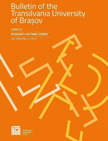Interethnic jokes in Transylvania. The case of Gypsy jokes
Interethnic jokes in Transylvania. The case of Gypsy jokes
Author(s): Noémi TudorSubject(s): Theoretical Linguistics, Lexis, Methodology and research technology, Ethnic Minorities Studies
Published by: Editura Universitatii Transilvania din Brasov
Keywords: ethnic humour; interethnic jokes; canned jokes; Transylvania; centre; periphery;
Summary/Abstract: Weaver (2014a; 2014b), among other researchers, states that ethnicity is a common topic in humour research. Davies (1998) mentions that most ethnic minorities become the butt of ethnicity-centred jokes. In the Romanian context, most ethnicity-centred humorous discourses target the Hungarians and the Gypsies (Popescu 2011). Jokes are, usually, told from the perspective of the Romanians as a central group, while the butts (i.e., the minorities) represent the peripheral one. In the case of Gypsy jokes, the peripheral group (i.e., the Gypsies) is named in various manners. The paper illustrates the ethnonyms and other means of calling this group that were found in the corpus, when presenting the portray of the Gypsy in humorous discourses. When the relationship existing between two ethnic categories is interpreted in the humorous discourse, I use the label of “interethnic jokes”. Interethnic jokes mirror intercultural relationships existing among ethnic groups which live together in Transylvania (the region where the corpus was collected). The perspective and the presence of the joke-teller (as the representative of the central group – i.e., Romanian/Transylvanian) is marked in the discourse by linguistic tools. This research shows that the presence of the central group may be explicitly stated via ethnonyms or may be implied through lexical or grammatical means. Lexically, the use of lexemes referring to (1) occupations/professions, (2) a person in general, or (3) proper names are the most frequent representations. Grammatically, the use of pronouns and verbs (1st and 2nd person, singular or plural) are widely used tools.
Journal: Bulletin of the Transilvania University of Braşov, Series IV: Philology & Cultural Studies
- Issue Year: 15/2022
- Issue No: 2
- Page Range: 9-28
- Page Count: 20
- Language: English

